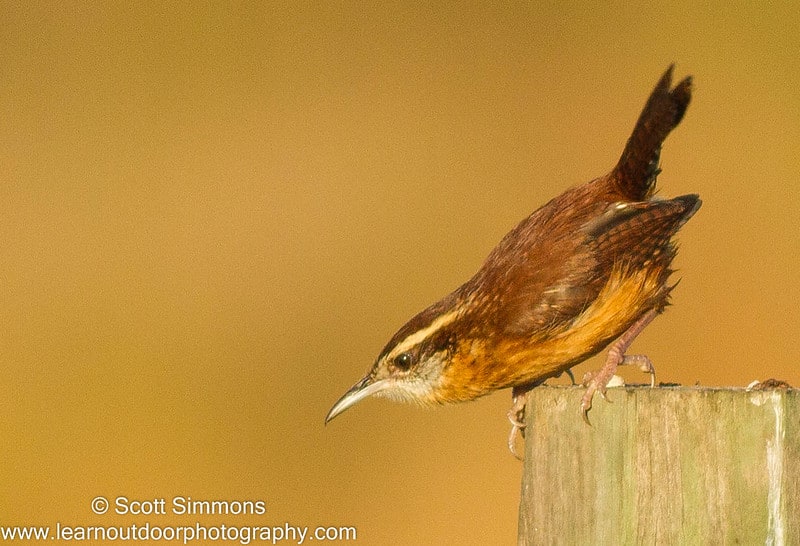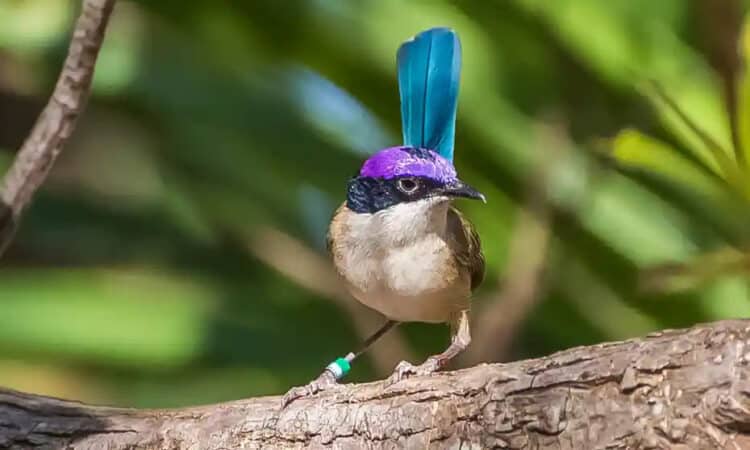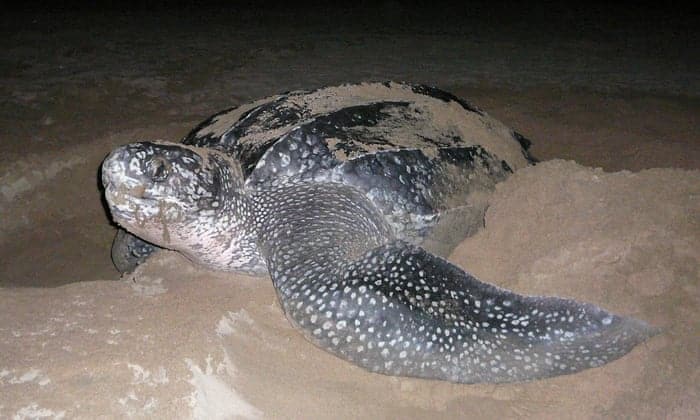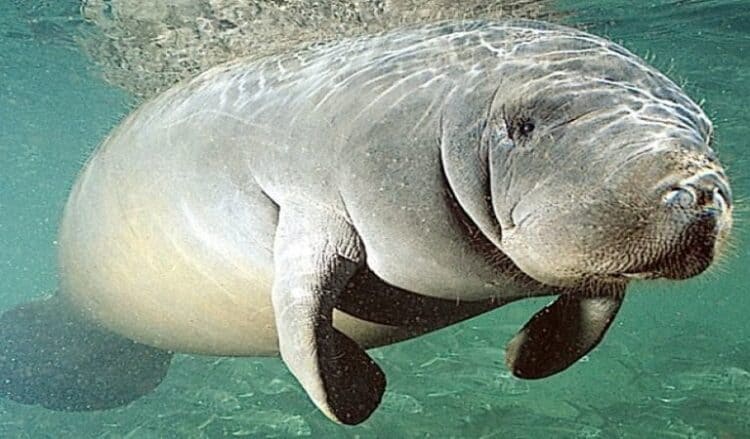Wrens do not top the list of birds that are difficult to identify, but for newer birders they can present a challenge. With practice they can be identified by their sounds alone–they’re vocal enough that they can frequently be detected and identified without being seen. But at first glance, they tend to look similar – little brownish birds that like to stick up their tails in the air.
We have four wrens species that are commonly found in Central Florida, and with a little bit of practice, they can easily be distinguished from each other by looking at their eye stripe and a couple other field marks. We’ll look at each of our wren species in order of the prominence of their eye stripe.


Marsh Wrens are winter visitors to Central Florida, and they very common in our cattail marshes from October through April. They have an extremely prominent eye-stripe with a dark crown and black and white stripes on their backs. They have buffy flanks, but usually a whitish chest. They look superficially similar to Carolina Wrens, but they are not found in the same habitat, and the dark crown and striping on the back really set them apart from that species.

Carolina Wrens are the only year-long residents of Central Florida, so in the summer months, if you see a wren, there’s a pretty high chance you’re looking at a Carolina Wren. They can be seen and heard in dense vegetation in forests and wooded areas, and even in neighborhoods. They have a very pronounced white eye stripe like Marsh Wrens, but their crowns are not as dark and they lack the black and white stripes on their backs. Adult wrens have buffy-orange chests; juveniles, though, have pale underparts, making them look superficially like Marsh Wrens. However, they are not found in the same habitat and they lack the dark crown and stripes on the back that Marsh Wrens have.


Like Marsh Wrens, Sedge Wrens are winter visitors to Central Florida, and they can be found in grass or sedge marshes from October through April. Sedge Wrens have bold stripes on their backs, but they lack the bold eye stripe sported by Marsh Wrens. Overall, they are less dark than Marsh Wrens with a more buffy appearance.


House Wrens are also winter visitors to Central Florida, and are commonly found here October through May. During the winter here, they prefer brushy tangles and thickets, similar to Carolina Wrens. However, House Wrens have almost no eye stripe, and overall they are more plain looking than the other wrens that visit Central Florida.

Winter Wrens also visit Florida in the winter time, but to my knowledge they are very uncommon and do not come farther south than Gainesville. One day I’d like to head up north and and look for them, but here in Central Florida, these are the four we have the privilege of seeing. I ordered these descriptions by the prominence of the eye stripe so you can clearly see their differences, but if you group them by habitat, a nice pattern emerges.
In marshy areas, you’re likely to find Sedge and Marsh Wrens, so a bold eye stripe is likely a Marsh Wren, and a faint stripe is likely a Sedge Wren. In other areas, you’re likely to find Carolina and House Wrens, so a bold eye stripe is likely a Carolina Wren, and a faint/absent stripe is likely a House Wren.
This nice little feature allows you to quickly get an ID, but don’t forget to double check your ID with other field marks; birds have wings, and they tend to use them, and sometimes they pop up where you don’t expect them.
Scott Simmons
Scott Simmons, based in Florida, is a lover of nature, landscape, and wildlife photography. Scott became interested in photography in 2001 when he was given his first SLR camera. When he acquired a telephoto lens, he became progressively more interested in birds and other wildlife. Scott enjoys learning about bird habitats and behavior, striving always to take images that are both beautiful and interpretive. Scott believes photography is a great vehicle to help others to appreciate the wonder for the stuff of earth.








Leave a Reply